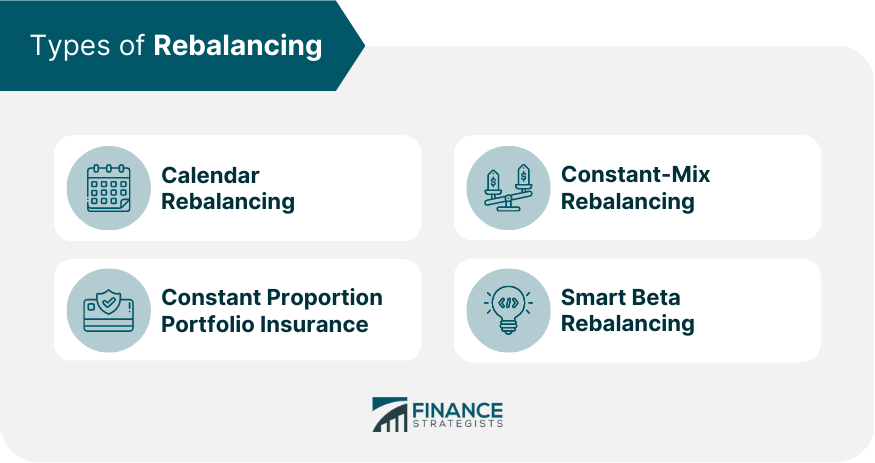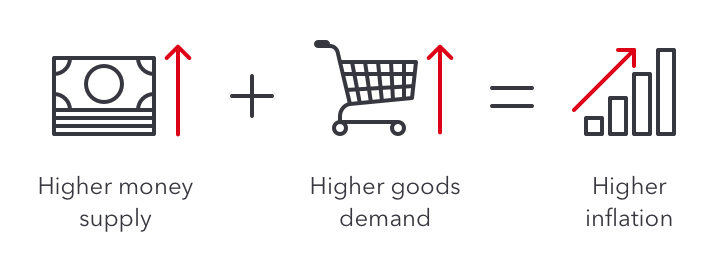Best Fixed Annuities| The Right Option. Are you looking for a secure retirement option? Fixed annuities offer individuals the ability to save for retirement without risking their hard-earned money. But with so many options, it can be difficult to determine which fixed annuity is best for you and your financial goals. In this article, we’ll explore what makes a “best” fixed annuity and provide an overview of some of the top choices on the market today. So if you’re ready to learn about the best fixed annuities available, read on!
Definition
A fixed annuity is like a savings account with an interest rate, but it’s more than that. It’s a contract between the investor and an insurance company that promises to pay out income in exchange for a lump-sum payment or series of payments over time.
To understand what a fixed annuity is, we must break down its definition. An annuity is an agreement where one party (the insurer or annuitant) agrees to make periodic payments to another party (the insured or annuitize). In simple terms, annuities are investments designed to provide investors with steady income during retirement.
The term “fixed” refers to how much money will be paid out each period for the duration of the policy; this amount does not change regardless of market performance or other factors. This makes them attractive, as they offer protection against fluctuations in the financial markets while still providing guaranteed returns on your investment. Furthermore, there are tax benefits associated with investing in a fixed annuity since all earnings are tax deferred until withdrawal.
Fixed annuities can vary depending on their features and structure, such as length of payout, frequency of payment, inflation adjustments, death benefit riders, etc., so understanding these nuances before making any decisions is important. With these components explained, let us now discuss the different types of fixed annuities available today.
Types of Annuities
Now that we have an understanding of what a fixed annuity is, let’s discuss the various types available. Immediate annuities are purchased with one payment and begin paying out right away. Variable annuities offer more flexibility as they allow you to make changes to your account while also providing tax-deferred growth potential. Index annuities provide some of the benefits of stocks without risking any principal payments in exchange for a guaranteed return.
Deferred annuities come with additional features like long-term care insurance or death benefits. Lastly, longevity annuities can help protect against outliving your savings by providing income when needed most—during your retirement years.
These types of fixed annuities each come with their own unique advantages and disadvantages; it is important to understand how these differences may impact your financial goals before deciding which type best suits you. Next, we will take a look at the tax benefits associated with fixed annuities.
Tax Benefits
Investing in a fixed annuity is like taking advantage of tax time: you get to reap the benefits without needing to pay any taxes. With its tax-deferred status, investing in a fixed annuity can help protect your money from taxation and give it time to grow. Your earnings are also exempt from most federal income taxes until they are withdrawn, making them an attractive option for many investors.
In addition, contributions may be tax deductible depending on the type of annuity purchased. This means that if you do choose to invest in a fixed annuity, you could potentially reduce your taxable income due to the amount contributed during the year. Furthermore, when withdrawing funds later down the line, some states will allow for partial or full tax withholding; this allows you to avoid being hit with hefty taxes all at once upon withdrawal.
Overall, these benefits make fixed annuities one of the best options available when looking for ways to save and manage your money in a tax-advantaged way. By understanding how these investments work and what their potential advantages are, investors can make more informed decisions about where they put their hard-earned cash. So before jumping into anything too quickly, consider researching further into the pros and cons of fixed annuities.
Pros and cons of fixed annuities
Now that we’ve reviewed the tax benefits of fixed annuities, let’s take a look at their pros and cons.
First, there are several advantages to investing in fixed annuities:
1. They provide an income stream for life, even after the original investment has been depleted.
2. Fixed annuities offer guaranteed returns on your money over time.
3. You can access your funds with no penalty or surrender fees if you need them during retirement.
On the other hand, there are some disadvantages associated with fixed annuities as well:
1. The rate of return is usually lower than what you would receive from other investments, such as stocks or mutual funds.
2. Your principal could be exposed to market risk depending on the type of annuity contract purchased.
3. There may also be additional charges and fees associated with managing and maintaining your fixed annuity account, which can reduce overall profits.
While these factors should be considered when making any financial decision, it is important to remember that all investments come with risks and rewards, including those involving fixed annuities. Taking the time to understand both sides before committing will help ensure you make an informed choice about whether this product is right for you and your retirement goals.
Best Fixed Annuities| The Right Option

How to Select a Provider
Choosing the right fixed annuity provider can be like finding a needle in a haystack. With so many providers available, it is essential to understand how to narrow down your selection and find the best option for you.
The first step when selecting an annuity provider is to research their ratings through various financial institutions such as Moody’s, Standard & Poor’s, Fitch Ratings, and A.M. Best. This will provide valuable insight into the company’s stability and reputation, as well as its rating within the industry. Additionally, researching customer reviews of different providers can help uncover any potential issues or complaints related to the annuity selection process.
It is also important to consider other factors that are not necessarily related directly to the annuities themselves but rather to the provider itself. Factors such as customer service, pricing structure, and turnaround time for deposits and withdrawals should all be taken into account before making a final decision on which provider is best suited for your needs.
Once you have evaluated these points carefully and made an informed decision about which provider would work best for you, you are ready to move onto considering the interest rate options they offer with their fixed annuity plans.
Interest Rate Options
When choosing a fixed annuity, it’s important to consider the interest rate options. These include:
Fixed rates
Variable rates
Index rates
Immediate rates
Fixed-rate annuities provide a stable and reliable return on your investment over time. The interest rate is locked in for the duration of the term and does not fluctuate with market conditions. This gives investors peace of mind knowing that their money will consistently earn returns throughout the life of the policy.
Variable-rate annuities offer more flexibility than fixed-rate policies, but they come with greater risk as well. With variable rates, you can choose which investments you want to put your money into, such as stocks or bonds, and if those investments perform well, you may earn higher returns than with a fixed rate product. However, if markets are volatile, then you could end up losing some (or all) of your principal investment amount.
Indexed annuities combine elements of both fixed and variable products by offering an initial guaranteed minimum interest rate plus additional rewards based on changes in certain stock indices, like the S&P 500. This type of policy offers potential growth opportunities while also providing some downside protection against sudden market declines.
There are also immediate annuities available, which begin paying out immediately after purchase without any waiting period required; however, these typically have lower returns compared to other types of fixed annuities due to their shorter terms and lack of compound interest benefits associated with longer durations.
The right choice depends on individual needs and preferences; the best way to determine what’s suitable for each investor is to consult with a financial advisor who can help assess factors such as age, income goals, risk tolerance level, etc. before making a decision. Moving on from here, we’ll explore different investment strategies when considering a fixed annuity plan.
Investment Strategies
The tapestry of life is woven from a variety of threads, with each individual thread representing an important part of our overall experience. Similarly, when it comes to constructing and managing your financial portfolio, asset allocation and investment strategies play essential roles in helping you achieve your retirement planning objectives.
Financial planning involves creating a balanced mix of investments that are appropriate for your age, risk tolerance, and anticipated time horizon. By diversifying your assets across different types of investments, such as stocks, bonds, and fixed annuities, you can reduce the level of volatility in your portfolio while still achieving long-term growth potential. Additionally, professional advisors may offer helpful guidance on selecting the right combination of investments for you based on your individual needs.
Portfolio diversification is also important because it helps ensure that if one type of investment performs poorly, any losses can be recouped by gains made elsewhere. Furthermore, proper diversification can help protect against inflationary pressures over time without sacrificing returns or taking excessive risks.
With careful consideration given to allocating resources to various asset classes according to personal goals, investors can enjoy greater peace of mind knowing their money is being managed responsibly towards desired outcomes.
As we move forward into the subsequent section about survivorship benefits, let us remember this: investing isn’t just about making money; it’s about building security for yourself and the ones you love down the road.
Survivorship Benefits
Survivorship benefits are an important feature of many fixed annuities. They provide a payment to the beneficiary if one or both parties die during the retirement period. Joint-life annuities are designed specifically to offer survivors’ benefits, and they often come with additional features such as death benefit protection and estate planning assistance.
Fixed annuities can also be used for other types of survivorship plans, such as joint survivor income plans that pay out after both individuals have died. These products provide financial security for surviving family members by providing them with guaranteed income in the event of either spouse’s death.
The selection of a suitable fixed annuity product depends on individual circumstances and needs. Each plan may include different riders and options, so it is important to carefully review all available information before making a decision. It’s also wise to consult with a qualified financial advisor who can help you find an appropriate option for your situation. With thoughtful consideration, you can choose a product that meets your retirement goals while providing valuable survivorship benefits for your loved ones.
Distribution options for fixed annuities vary depending on the specific terms of the contract but generally involve lump-sum payments or regular installments over time.
Distribution Options
Fixed annuities provide a secure and reliable income stream, whether it be through a lump-sum payout or regular distributions. Investors have several options for their annuity distribution, allowing them to customize their payout structure depending on individual needs and circumstances.
The simplest option available is the lump-sum payment: investors can receive all of their money at once in a single check. This is ideal for those who need immediate access to funds or want to put the money into other investments right away. It’s important to note that there may be tax implications associated with this type of withdrawal due to its large size.
Investors can also choose periodic payments or systematic withdrawals from their fixed annuity if they want an ongoing income stream over time. Periodic payments are set up as either monthly or annual checks, while systematic withdrawals allow the investor to withdraw predetermined amounts of money on a prearranged schedule (e.g., monthly). Partial withdrawals are allowed as well, although fees may apply based on the terms of the contract and the age of the investor.
No matter which option is chosen, investors should always consider future inflation when making decisions about annuity payouts since a lack of protection against rising costs could eventually erode value over time.

Inflation Protection
Inflation protection is a key factor to consider when shopping for annuities. When the cost of living rises, it’s important that your fixed annuity payments keep up with inflation so you can maintain your standard of living. Annuity-inflation riders allow investors to protect their principal and interest payments against rising costs by increasing these payments each year at a rate linked to an index like the Consumer Price Index (CPI).
Annuity-protection riders are not offered on all types of annuities, but they may be available as part of some products. Fixed-inflation riders provide protection from market fluctuations while still offering potential gains if the index increases more than expected. This type of rider also helps guard against unexpected losses in purchasing power due to higher inflation rates.
Before investing in an annuity product, make sure you understand how inflation protection works and what features are included in the contract. Ask about any fees associated with the rider and whether there’s a guarantee that future payments will cover expenses related to inflation or other risks. Consider looking into other options such as bonds or stocks, which could offer greater returns although they come with additional risk factors.
Investors should carefully weigh their need for protection against potential growth opportunities before making any decisions about an annuity product. Knowing how much coverage you want and need will help ensure that you get the most out of your investment over time. With this information in hand, investors can then consider the guarantees and backing provided by different providers.
Best Fixed Annuities| The Right Option
Guarantees and Backing
As we looked at the way inflation can erode away our savings, it is important to ensure that any investment we make in an annuity provides a level of security. Guaranteed income and financial backing are two key elements when considering fixed annuities. Insurance companies provide this guarantee by providing annuity contracts with their backing and financial strength behind them.
When searching for an annuity provider, look for one that has been approved by your state insurance department or another regulatory agency. Make sure they have a good reputation and a solid track record before investing in their product. This will give you peace of mind knowing that your money is safe even if the market takes a downturn or interest rates drop unexpectedly.
It’s also wise to research other features associated with certain annuities, such as early withdrawal penalties, fees and charges, surrender periods, and more. Doing so can help you find the right fit for your individual situation so you get the best return on your investment while staying protected from unexpected losses.
Fees and Charges
When considering a fixed annuity, it’s important to review the fees and charges associated with the product. These administrative costs can vary depending on the type of annuity purchased as well as the insurance company offering it. Many insurers will charge an initial fee prior to issuing a policy in order to cover any expenses related to underwriting and processing. Additionally, there may be annual or periodic fees for ongoing maintenance of your annuity account.
It is essential that you understand all potential charges before signing up for an annuity plan. Knowing how much certain fees are, such as surrender penalties or mortality risks, can help you make informed decisions about which product best suits your needs. It’s also important to remember that these costs can add up over time and reduce your overall return. Therefore, do your research carefully so that you know exactly what you’re getting into when purchasing a fixed annuity.
By being aware of all applicable fees and charges upfront, you’ll have peace of mind knowing that there won’t be any unexpected surprises down the road when withdrawing from your annuity account. Moving forward, let’s look at the withdrawal penalties associated with fixed annuities.
Withdrawal Penalties
Early withdrawals may also incur additional costs or restrictions on how much you can withdraw at once. It’s important to understand all applicable annuity penalties before investing in a fixed annuity product, as this will help ensure you make informed decisions about your investments.
When it comes to annuities, one of the most important things to consider is withdrawal penalties. Withdrawal fees and surrender charges are both common types of penalties that can be imposed when withdrawing money from an annuity.
In many cases, there are liquidity options available that allow investors to access their funds without incurring any additional costs or penalties. These include taking out loans against the value of the policy or setting up distributions for a predetermined period of time. Investors should always read all relevant documentation so that they are aware of what these options entail and whether they meet their needs.
It’s important to weigh carefully the pros and cons of different withdrawal strategies before making any final decisions regarding fixed annuities. Being familiar with all potential withdrawal penalties will help you make more informed choices about your investments and avoid costly mistakes down the road. From here, we turn our attention to understanding liquidity options for fixed annuities, which provide greater flexibility for accessing funds during retirement.
Liquidity Options
It may seem counterintuitive to consider a fixed annuity as a liquid asset. After all, an annuity is typically considered an investment with long-term benefits, and the money invested in it cannot be accessed without penalty until retirement age. However, there are several liquidity options available if you purchase the best fixed annuity:
1. Cashout: You can cash out your entire account balance at any time, but this will likely incur surrender charges and taxes depending on the terms of your policy.
2. Partial Withdrawal: This allows for limited access to funds from your account before retirement age and usually requires that you keep some portion of the original deposit intact.
3. Immediate Annuity: You may choose to convert part or all of your best fixed annuity into an immediate annuity, which provides monthly payments immediately after conversion (annuitization).
4. Lump Sum Payment: If you have accumulated enough equity in your contract, you may qualify for a lump sum payment upon maturity or death prior to retirement age.
In addition to these withdrawal options, most policies also have rollover requirements that must be met when transferring funds between accounts or insurance companies.

Rollover Requirements
Moving on from liquidity options, this section will discuss rollover requirements for fixed annuities. When transferring money into or out of an annuity contract, most companies require a 60-day waiting period before any withdrawals can be made. This is to ensure that the funds are moved safely and securely with no issues.
Additionally, when it comes to rolling over funds from another account into a fixed annuity, there may be restrictions depending on what type of account you’re transferring from. For example, if you are transferring funds from an IRA into an annuity, then you must follow certain IRS rules and regulations in order to do so without incurring penalties or fees.
When withdrawing money from your fixed annuity, it’s important to understand how much of the amount withdrawn is considered taxable income by the IRS. Generally speaking, only the earnings portion of your withdrawal is subject to taxation; however, some states may have different tax laws regarding these types of transactions. It’s best to speak with a financial advisor or accountant who understands your particular situation in order to determine how much of your withdrawal is taxable and how much isn’t.
It’s also worth noting that while making withdrawals from your fixed annuity can provide access to additional capital during retirement years, they should still be used as sparingly as possible since such withdrawals decrease the total value of the policy overall. Taking all this information into consideration will help you make the most informed decision about whether or not taking out a fixed annuity makes sense for you financially in the long run.
Frequently Asked Questions
What Is The Minimum Investment Amount For A Fixed Annuity?
When it comes to fixed annuities, one of the key considerations is understanding the minimum investment amount. This can vary based on a range of factors, including the type of fixed annuity you are looking at and what fees may be associated with it.
It’s important to thoroughly research different types of annuities before investing in order to ensure you understand the specific requirements for each one.
The good news is that most fixed annuities have relatively low minimum investment amounts compared to other types of investments, such as stocks or mutual funds. Typically, these investments require an initial lump sum payment plus any applicable fees associated with setting up the account. There may also be ongoing payments, depending on the terms of your particular contract.
The exact amount will depend on the provider, so it’s best to shop around and compare options from different companies before making your decision.
Although there is some variation between providers regarding their minimum investment amounts for fixed annuities, most will accept deposits ranging from $1,000 to $5,000. Additionally, many companies offer incentives such as waived setup fees or reduced interest rates when investors make larger contributions to their accounts upfront; however, this should not be considered a substitute for researching all available options first.
Understanding how much money you need to invest in a fixed annuity is essential in helping determine whether it is right for you and your financial goals.
Are There Any Age Restrictions on Purchasing A Fixed Annuity?
When thinking about buying a fixed annuity, it’s important to find out if there are any age limits for this kind of investment. Generally speaking, all investments have some type of restriction, and this includes fixed annuities as well. In order to get a better understanding of the age limits when purchasing a fixed annuity, here are three points to consider:
1. Age requirements: Most financial institutions will require that you be at least 18 years old in order to purchase a fixed annuity.
2. Relaxed rules: Some states may also allow minors between 10 and 17 years old to open an account with parental consent.
3. Early withdrawals from these accounts are generally not allowed until you reach the age of 59 1/2.
These guidelines will help provide clarity on how different ages can impact your ability to make a purchase or withdraw funds from a fixed annuity account. Additionally, depending on where you live, certain state regulations may apply, so always check with your local provider before making any commitments regarding an annuity purchase.
It’s important to note that while most providers follow similar protocols when determining eligibility for investing in a fixed annuity, they can still vary based on specific rules and regulations set by each individual institution or governing body within the same region.
Can I accessmy money before the maturity date Date?
When purchasing a fixed annuity, one of the most important questions to consider is whether or not you can access your money before the maturity date. Withdrawing money prematurely from an annuity could lead to significant penalties and should be considered carefully.
You may be able to get your money out of your annuity before the agreement ends, but this will depend on the details of your contract. Generally speaking, you have several options when it comes to withdrawing funds early:
1. Surrender: By surrendering your policy, you are able to receive all available funds in exchange for canceling the annuity completely. However, this action typically incurs a penalty, which may be substantial depending on how long ago you purchased the annuity and other factors related to your specific situation.
2. Partial Surrender: A partial surrender allows you to withdraw some of your accumulated value without canceling the entire contract. This option usually carries fewer fees than full surrender, but limits may still apply as determined by the terms of your individual policy agreement.
3. Systematic withdrawals: Some policies permit systematic withdrawals over time that allow you transactions, access some or all of their cash value incrementally without terminating the whole contract however it is important to note that there may still be associated costs with these types of transactions so make sure you check with your provider beforehand if this is something that interests you.
4. Loans: You can take out loans against certain types of fixed annuities, following you access to cash while keeping ownership of the policy intact; however, just like any loan taken out against collateral, you must pay back both interest and principal amount borrowed with this type of arrangement making it potentially more costly than other withdrawal options mentioned above if not managed properly during its life cycle.
Ultimately, each person’s financial situation and needs are unique, so understanding what choices are available along with any potential consequences ahead of time will help ensure that whatever decision is made best suits those requirements now and into the future.
Are There Any Fees Associated With Purchasing A Fixed Annuity?
When purchasing a fixed annuity, people may wonder if there are any fees associated with the process. It is important to understand all of the possible costs that could be incurred when making such an investment. This article will outline various fees related to buying a fixed annuity, including:
Fixed annuity fees:
Annuity Purchase Fees
Annuity Contract Fees
Annuity Setup Fees
Annuity administration fees
Annuities are investments that can provide financial stability in retirement by providing regular income payments over time. Depending on the type of contract you choose and the company offering it, different fees may apply. For instance, most annuities come with an initial purchase fee that covers administrative expenses as well as other charges for setting up the contract.
There may also be additional charges for entering into or changing the terms of your contract. Additionally, some companies charge periodic administration fees for managing your account.
It is important to note that these fees can vary significantly depending on the provider and plan you select. Therefore, it is wise to shop around carefully before committing to an annuity plan so that you know exactly what kind of costs you’ll incur upfront and throughout its lifetime.
Make sure you ask questions about any hidden or extra fees not mentioned in their contracts and read through them thoroughly before signing anything. By doing this research beforehand, you can save yourself from potential costly surprises down the line.
When investing in a fixed annuity product, understanding all applicable fees should be top of mind before taking the plunge. Taking time to review all available options helps ensure that you have full knowledge of what’s involved financially prior to commitment, allowing for peace of mind now and in the future.
Is the interest rate guaranteed for the duration of the annuity?
When considering a fixed annuity, the interest rate guarantee is an important factor to consider. Specifically, it is essential to understand whether or not the rate of return on your investment is guaranteed for the duration of the annuity. This type of assurance may be especially appealing if you are looking for stability in terms of returns over time and do not want any surprises when it comes to your finances.
The interest rate guarantee associated with a fixed annuity depends on several factors, including the length of its maturity period and prevailing market conditions at the time of purchase.
Typically, as long as you keep up with payments during the term of your contract, then your fixed annuity rate should remain unaffected by outside forces such as inflation or deflation. It’s also worth noting that many providers offer additional features like death benefits in order to provide even more protection against financial instability.
Ultimately, knowing how much security a provider offers can make all the difference when deciding which fixed annuity option is right for you. Asking questions about any potential guarantees related to interest rates can help ensure that you get optimal returns from this type of product while reducing the risks associated with fluctuations in the markets.
With these considerations in mind, researching different options available on the market can give you peace-of-mind knowing that you have made an informed decision about investing in a fixed annuity for yourself or someone else.
Conclusion
In conclusion, fixed annuities can offer a great way to save for retirement. With a low minimum investment amount and no age restrictions, they’re an accessible option for many people looking to build their nest egg. Plus, with the interest rate guaranteed for the duration of the annuity, you can rest assured that your savings will grow steadily over time.
On average, individuals who invest in fixed annuities receive an annual return of 4–5%, which is higher than traditional bank accounts or CD rates. I particularly like how easy it is to access my money before the maturity date if needed, though there may be additional fees associated with this depending on your provider.
All things considered, fixed annuities are worth exploring as part of your overall retirement strategy. For those interested in creating long-term wealth without taking on too much risk, they could prove to be a valuable tool in helping you reach your financial goals!













Leave a Reply